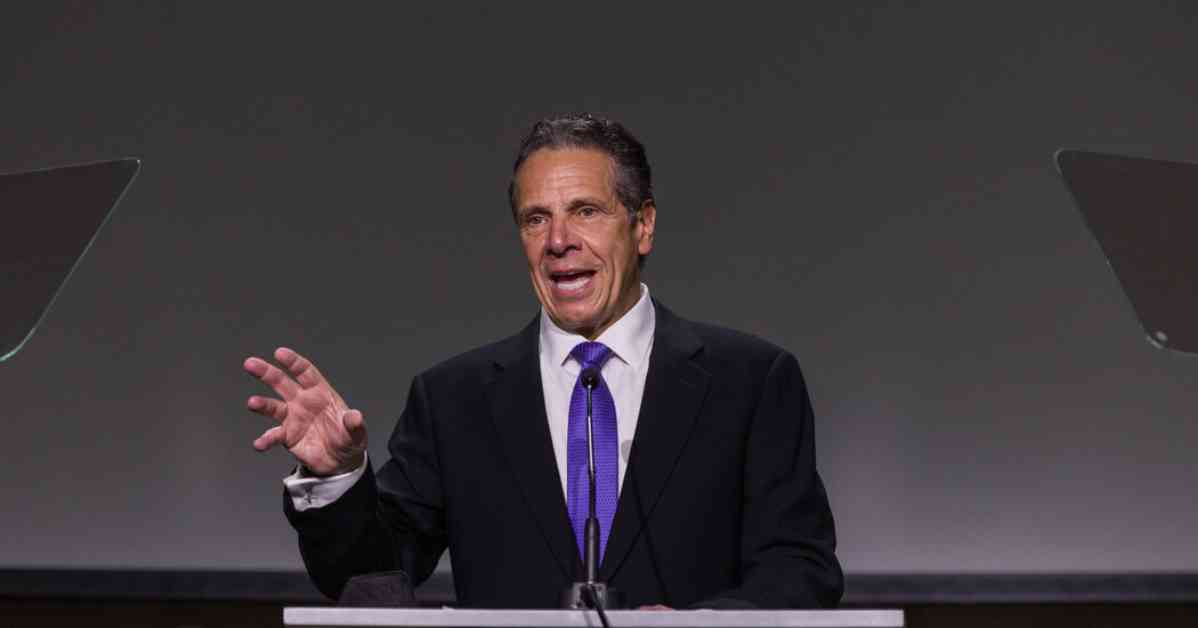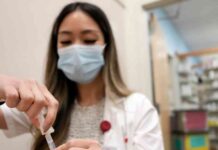Former Governor Andrew M. Cuomo of New York is set to testify publicly before a congressional subcommittee next week to address the devastating impact of the COVID-19 pandemic on the state’s nursing homes. The hearing, scheduled for September 10, comes after Mr. Cuomo previously testified behind closed doors to a Republican-led House panel investigating the pandemic.
The House Select Subcommittee on the Coronavirus Pandemic announced that Mr. Cuomo will be facing questions about the thousands of deaths that occurred in New York’s nursing homes during the height of the pandemic. Representative Brad Wenstrup, the subcommittee’s chairman, emphasized the importance of holding Mr. Cuomo accountable for the policies that may have contributed to the high death toll in nursing homes.
In his statement, Representative Wenstrup highlighted the significance of Mr. Cuomo providing answers to the families who lost loved ones in nursing homes during the pandemic. He stated, “Andrew Cuomo owes answers to the 15,000 families who lost loved ones in New York’s nursing homes during the Covid-19 pandemic.” The upcoming hearing will offer Americans the opportunity to hear directly from the former governor about these potentially fatal nursing home policies.
This will not be the first time that Mr. Cuomo faces questioning from House Republicans. In June, after receiving a subpoena, he testified for seven hours behind closed doors. The transcript of that testimony has not been released, but lawmakers revealed that they pressed Mr. Cuomo about a directive from the state’s Health Department that required nursing homes to accept COVID-19 patients from hospitals.
The decision to transfer COVID-19 patients into nursing homes has been widely criticized as a factor contributing to the spread of the virus among vulnerable residents. By June 2021, more than 15,000 nursing home residents had lost their lives to COVID-19 in New York. During his closed-door testimony, Mr. Cuomo was described as “shockingly callous” and showing “little remorse for the thousands of lives lost” by Mr. Wenstrup.
In response to the criticism, Mr. Cuomo shifted blame to the Trump administration, arguing that the federal government’s handling of the pandemic was to blame for the situation in New York. He pointed out the delays in implementing testing and the lack of preparedness at the national level. Mr. Cuomo expressed his belief that if he had known then what he knows now, he would have disregarded federal guidance and taken a different approach to protecting nursing home residents.
A recent state-commissioned report criticized Mr. Cuomo’s overall handling of the pandemic but did not directly fault him for the nursing home deaths. The report suggested that the nursing home deaths in New York were in line with national outcomes, indicating that the situation was not unique to the state. However, questions remain about the decision-making process that led to the directive requiring nursing homes to accept COVID-19 patients.
As the congressional subcommittee prepares to hear from Mr. Cuomo once again, the focus will be on gaining clarity on the factors that contributed to the high death toll in nursing homes during the pandemic. The subcommittee has also conducted transcribed interviews with several high-ranking officials from the Cuomo administration, shedding light on the decision-making process and potential shortcomings in handling the crisis.
The upcoming hearing on September 10 will provide a platform for Mr. Cuomo to address the concerns and questions raised by lawmakers and the public regarding his leadership during the COVID-19 pandemic. The testimony is expected to offer insight into the challenges faced by state officials in navigating the unprecedented crisis and the lessons learned for future pandemic preparedness and response efforts.
The Impact of COVID-19 on Nursing Homes
Nursing homes and long-term care facilities emerged as hotspots for COVID-19 transmission early in the pandemic, with residents facing heightened risks due to their age and underlying health conditions. The decision to transfer COVID-19 patients into nursing homes raised concerns about the potential for the virus to spread rapidly among vulnerable populations.
The directive issued by the New York State Health Department requiring nursing homes to accept COVID-19 patients from hospitals was intended to alleviate the strain on healthcare facilities. However, critics argue that this decision inadvertently contributed to the high death toll among nursing home residents. The lack of adequate testing and personal protective equipment further exacerbated the challenges faced by nursing homes in containing the virus.
The devastating impact of COVID-19 on nursing homes in New York and across the country underscored the need for enhanced infection control measures and preparedness for future public health emergencies. The upcoming congressional hearing will provide an opportunity to assess the response to the pandemic in nursing homes and identify areas for improvement in safeguarding vulnerable populations.
Accountability and Transparency in Leadership
As former Governor Cuomo prepares to testify before Congress, the focus will be on accountability and transparency in leadership during times of crisis. The decision-making process that led to the directive on transferring COVID-19 patients into nursing homes will be scrutinized, with lawmakers seeking clarification on the rationale behind the policy.
The role of federal guidance and coordination in state responses to the pandemic will also be a key point of discussion during the hearing. Mr. Cuomo’s assertion that the federal government’s handling of the pandemic was a contributing factor to the situation in New York raises questions about the interplay between federal and state authorities in managing public health emergencies.
Transparency in leadership is essential for building trust and ensuring accountability in times of crisis. The public’s right to know the facts surrounding the decisions made by government officials during the pandemic is paramount to understanding the full scope of the challenges faced and the lessons learned for future preparedness efforts.
Lessons Learned and Future Preparedness
The COVID-19 pandemic has exposed vulnerabilities in the healthcare system and highlighted the need for robust preparedness and response strategies for infectious disease outbreaks. The lessons learned from the pandemic, including the impact on nursing homes and long-term care facilities, will inform future efforts to enhance public health infrastructure and resilience.
The upcoming congressional hearing with Mr. Cuomo presents an opportunity to reflect on the challenges faced during the pandemic and identify ways to strengthen pandemic preparedness moving forward. The experiences of state officials, healthcare providers, and other stakeholders will contribute to a comprehensive understanding of the complexities of managing public health emergencies.
As the nation continues to grapple with the ongoing impact of COVID-19 and prepares for future health threats, the lessons learned from the pandemic will shape policies and practices aimed at protecting vulnerable populations, including nursing home residents. The testimony of Mr. Cuomo before Congress will be a critical step in the process of accountability and transparency in leadership during times of crisis.

















